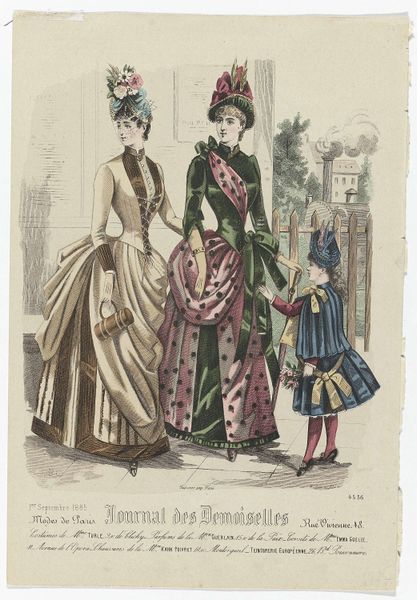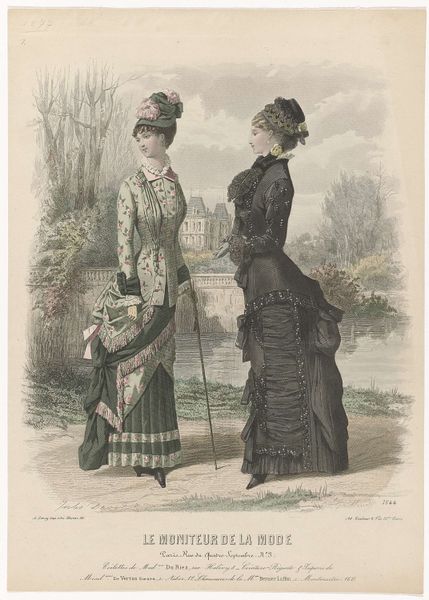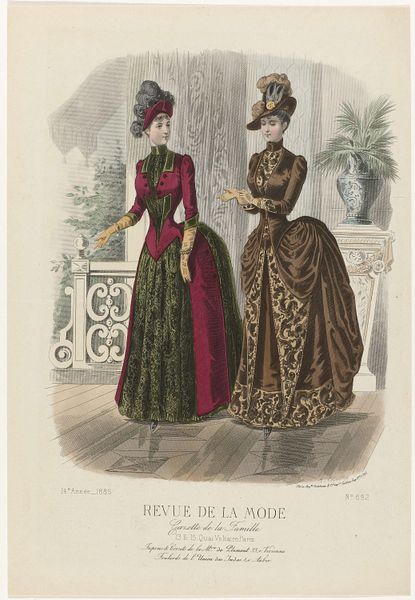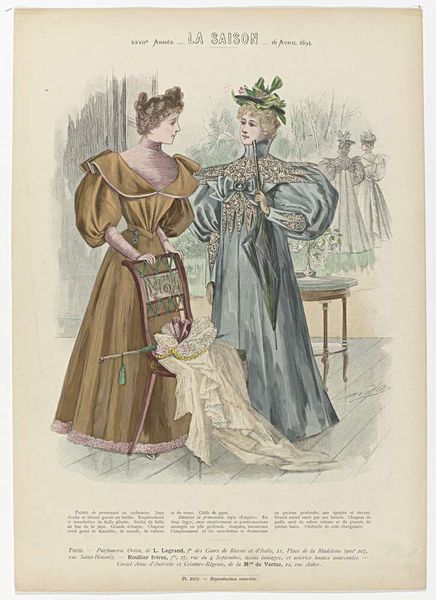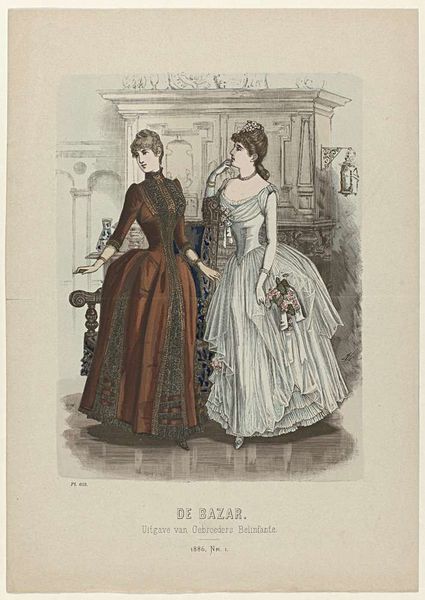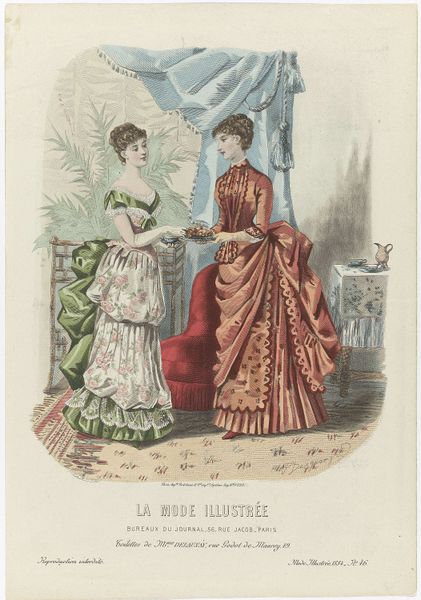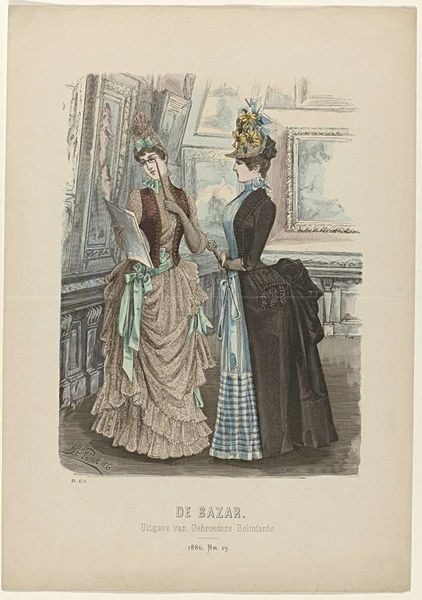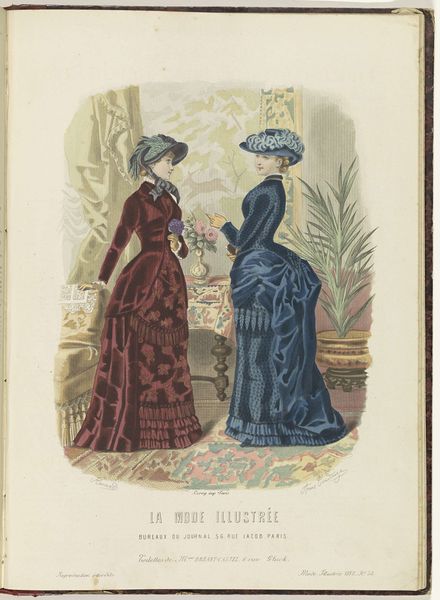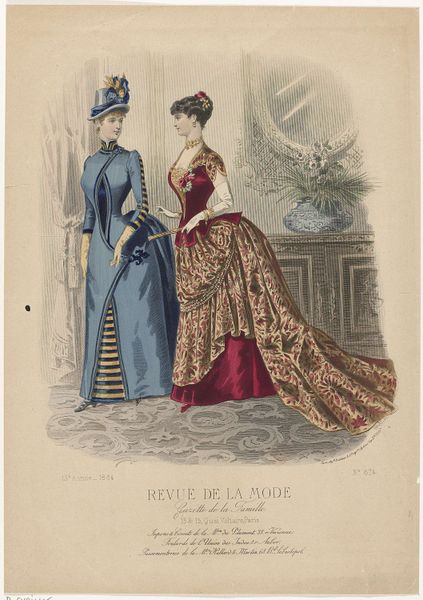
Dimensions: height 277 mm, width 211 mm
Copyright: Rijks Museum: Open Domain
Editor: Here we have Edouard Tailland's "Shopping," a lithograph from 1878. I'm struck by how detailed and precise the rendering is, especially in the women's clothing. How would you approach an interpretation of this work, focusing on its form and structure? Curator: Consider the rhythmic repetition of line. The artist has structured the composition with linear precision; notice how the vertical stripes of one woman’s garment plays against the strong diagonals of the plaid, creating a controlled visual tension. Furthermore, examine how light is used not for realistic modeling, but as another element to define shapes and textures, notice where it lands, the degree of tonality. The building and figures in the background are softly muted, in contrast with the intense focus upon the female figures and what appears to be a storefront. Editor: That’s interesting; the contrast definitely emphasizes the figures and storefront. But what do you make of the relatively flat background behind the figures? The street scene feels incomplete and secondary, almost like a stage backdrop. Curator: Exactly. Tailland uses flattening as a formal strategy, directing our attention to the surface, disrupting any illusionistic depth, to invite consideration to the formal arrangements over narrative context. Ask yourself how this lithograph would look had Tailland employed a full mastery of linear perspective throughout? Editor: I see your point; focusing on the formal relationships allows for a greater understanding of Tailland's artistic decisions. Curator: Yes, understanding the surface helps you understand Tailland's methods of balancing details, texture, and tones to achieve a complete whole within the artistic intention, as is the Romanticist aim. Editor: This lens has really expanded my understanding! I realize now that details in isolation have a place within a far grander design.
Comments
rijksmuseum about 2 years ago
⋮
Until the 1870s women were not allowed to go out without a male escort, but then the cramped, unsafe lanes and alleys of Paris were replaced by broad, illuminated and hence ‘safe’ boulevards, lined with a plethora of shops. The age of ‘shopping’ – and window shopping – was born. Fashion illustrators tapped into this new phenomenon in their work. Women in walking dresses were represented admiring, trying on and also purchasing items in the new ‘department stores’.
Join the conversation
Join millions of artists and users on Artera today and experience the ultimate creative platform.
